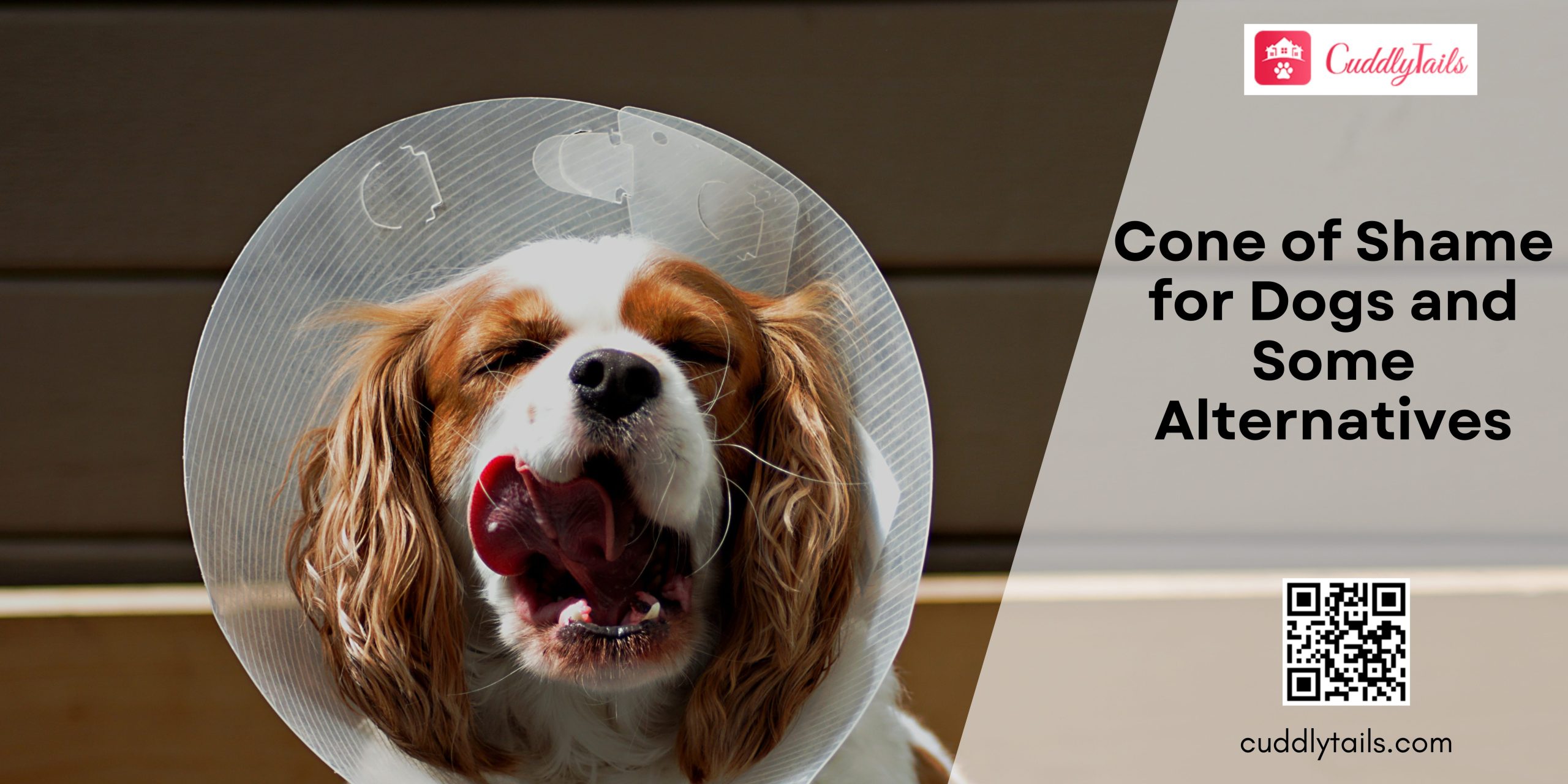Cone of Shame for Dogs and Some Alternatives
The infamous “Cone of Shame,” also known as the Elizabethan collar, is a common sight in veterinary clinics and households with dogs recovering from surgery or dealing with skin irritations. Initially designed to prevent dogs from licking or chewing on wounds, the cone serves a crucial role in promoting healing and preventing further injury.
Introduction to the Cone of Shame
What Is the Cone of Shame?
The cone of shame refers to a protective device shaped like a funnel, designed to prevent dogs from reaching their wounds. The term gained popularity thanks to its appearance in movies and memes, but it serves a serious purpose. Typically made from plastic or softer materials, these cones are adjustable and secure around the dog’s neck to limit access to healing areas. They’re particularly useful after surgeries, skin treatments, or injuries.
Why Dogs Need a Cone
When dogs are injured or recovering from surgery, their natural instincts often lead them to lick or chew the affected area. Unfortunately, this behavior can worsen the wound, cause infections, or even remove stitches. The cone serves as a physical barrier, ensuring your furry friend stays out of harm’s way during the healing process.
Drawbacks and Challenges of the Cone of Shame
As much as the Cone of Shame is a necessary tool for healing, it comes with its own set of challenges and grumbles from your furry companion.
Discomfort and Stress for Dogs
Imagine wearing a giant lampshade around your neck 24/7 – not exactly a spa day, right? Dogs can find the cone uncomfortable, cumbersome, and downright embarrassing. It’s like being stuck in a bad ’90s fashion trend.
Mobility and Eating Restrictions
Traditional plastic cones are rigid and can be awkward for dogs to wear.
Stress and Anxiety
Many dogs feel trapped or disoriented when wearing a cone, which can affect their mood and behavior.
How to Help Your Dog Adjust to the Cone
Helping your dog adapt to the cone can make the healing process smoother. Start by introducing the cone gradually. Let your dog sniff and inspect it before placing it around their neck. Ensure the cone fits snugly but isn’t too tight, and use treats or praise to associate the cone with positive experiences. It’s essential to monitor your dog for signs of distress and make adjustments if needed.
Alternatives to the Traditional Cone of Shame
Inflatable Collars
Inflatable collars look like neck pillows and are often preferred for their comfort and mobility. They prevent dogs from turning their heads too far, protecting wounds without the bulkiness of a traditional cone. These collars are ideal for minor injuries or surgeries but might not be suitable if the wound is on the dog’s head or paws.
Soft Collars
Soft collars, also known as fabric E-collars, are a gentler alternative to the rigid plastic cone. They’re typically made from padded material that feels more comfortable against the dog’s skin. These collars are great for less severe injuries or dogs who are particularly sensitive to rigid cones. However, they may not be effective for all wounds, especially if the dog is determined to reach a specific area.
Clothing-Based Options
Recovery suits and body wraps are innovative alternatives to cones that work particularly well for wounds on the body. These snug-fitting garments are designed to cover surgical sites or injuries, acting like a shield. They come in various sizes and styles to accommodate different dog breeds and wound locations.
Tips for Choosing the Right Option for Your Dog
Selecting the right recovery solution requires careful consideration:
Evaluate the Wound Location
For head or paw injuries, a cone or inflatable collar might be more effective. For body wounds, a recovery suit could work best.
Consider Your Dog’s Behavior
Energetic or anxious dogs may require a sturdier option to prevent tampering.
Consult a Veterinarian
Your vet can provide tailored recommendations based on your dog’s medical history and injury.
Test Options
Don’t hesitate to try different solutions to find what works best.
Conclusion
As caregivers for our beloved canine companions, it is essential to consider their comfort and well-being when utilizing the cone of shame or exploring alternative options. By understanding the reasons for using the cone, acknowledging its drawbacks, and being aware of alternative solutions, we can make informed decisions to ensure our dogs’ recovery and overall happiness. Remember, each dog is unique, so finding the best fit for their specific needs is key to promoting a successful healing journey.
Frequently Asked Questions (FAQs)
What is the best alternative to the cone of shame?
The best alternative depends on your dog’s needs. Inflatable collars and recovery suits are popular for their comfort and mobility.
How long should a dog wear a cone?
Most dogs need to wear a cone or alternative until their wound is fully healed, typically 10-14 days, as advised by a vet.
Can my dog sleep with an inflatable collar?
Yes, inflatable collars are designed to be comfortable enough for dogs to sleep with them on.
What should I do if my dog hates the cone?
Try alternatives like a soft or inflatable collar, or use positive reinforcement to help your dog adjust to the cone.
Are recovery suits effective for all wounds?
Recovery suits work well for body wounds but may not be suitable for head, neck, or paw injuries.

